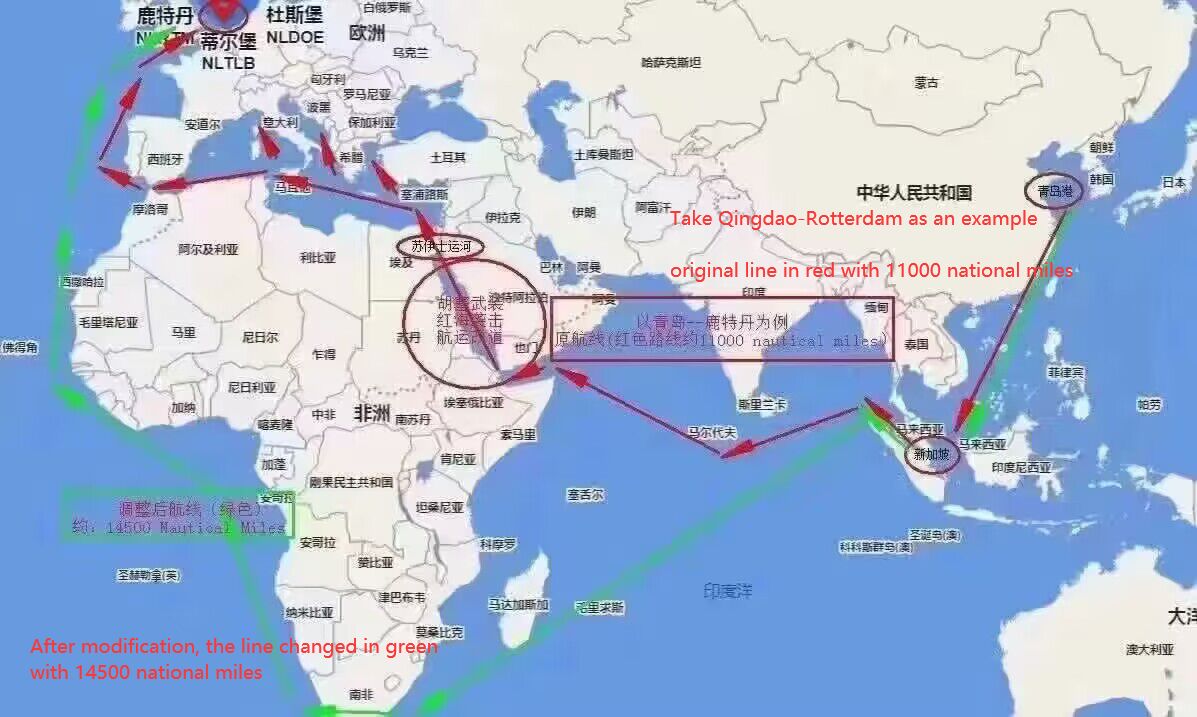As one of the busiest waterways in the world, the Suez Canal-Red Sea route is the main route for international shipping. About 12% of the world's trade, including 30% of the world's containers, passes through the Suez Canal and then through the Red Sea and Bab el-Mandeb Strait.
The Bab El-Mandeb Strait, located between the Horn of Africa and the Middle East, connects the Red Sea with the Gulf of Aden and the Arabian Sea, which empties into the Indian Ocean.Therefore, for long-distance freight ships that want to take the Suez Canal route, the Bab el-Mandeb Strait can be basically said to be the only way.
Following the recent attacks on several cargo ships in the Bab el-Mandab Strait and the Red Sea waters, the four leading container shipping companies in Europe - Maersk, Hapag-Lloyd, Mediterranean Shipping and CMA CGM Shipping Group have announced the suspension of all their container traffic through the Red Sea. That means freighters will avoid the Suez Canal route and go around the Cape of Good Hope at the southern tip of Africa.
Since the outbreak of a new round of Israeli-Palestinian conflict, Yemen's Houthi armed forces in the Red Sea continuously attacked "associated with Israel" ships, the tension in the Red Sea waters means that the risk of spillover of the Israeli-Palestinian conflict has increased, and has affected international shipping.
Shipping companies began to reroute, adding to the surge in freight rates. Platts data show that the port of Rotterdam to the port of Singapore, for example, the conventional voyage of about 8,440 nautical miles, the detour of the Cape of Good Hope of about 11,720 nautical miles, an increase of about 40%, which will lead to a significant increase in fuel costs.
At the same time, war risk surcharges are rising. According to market estimates, war risk premiums have risen this week to between 0.1% and 0.2% of the ship's value, up from 0.07% last week. While there will be some discounts, that still means adding tens of thousands of dollars to a seven-day voyage.
